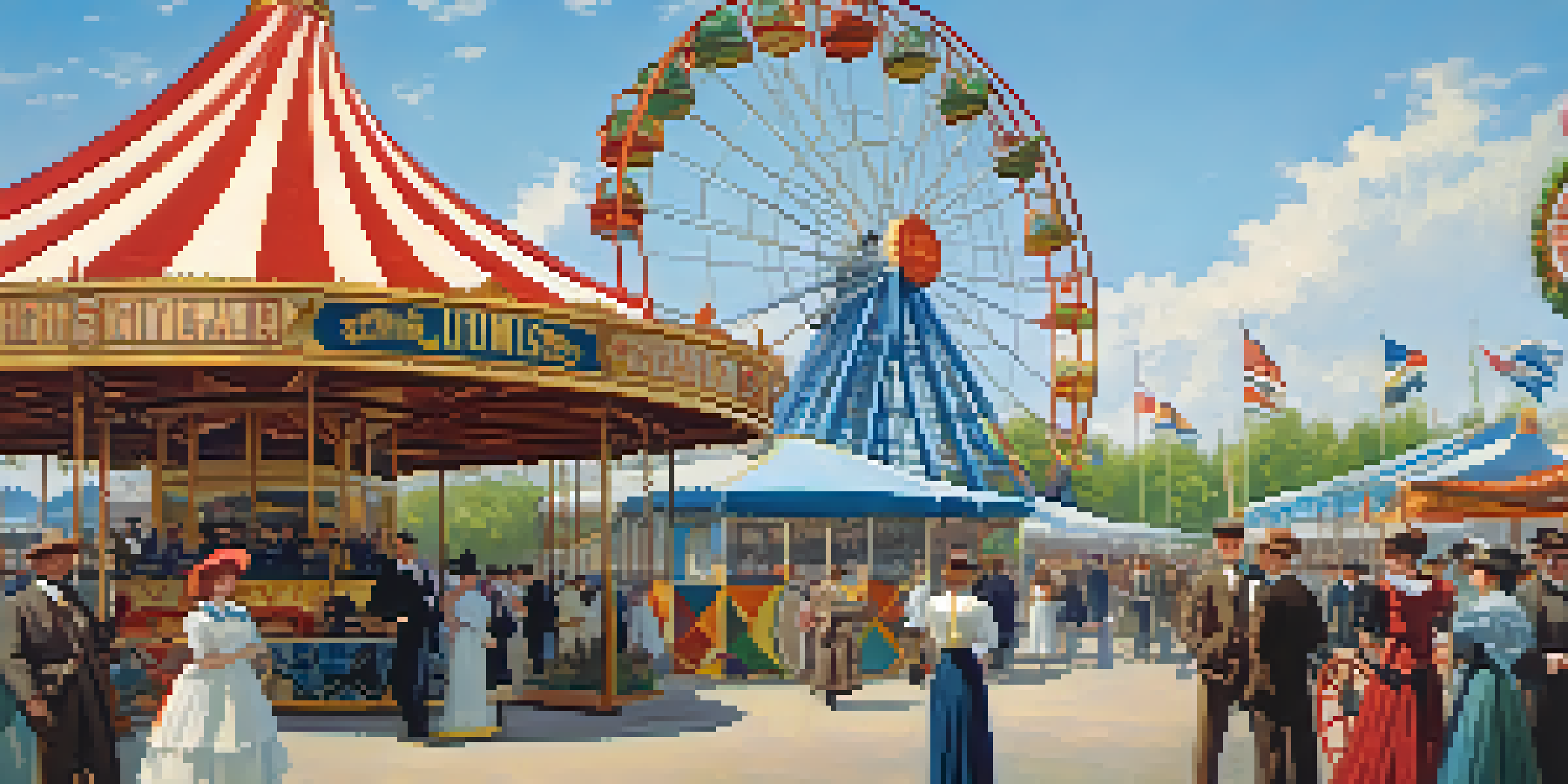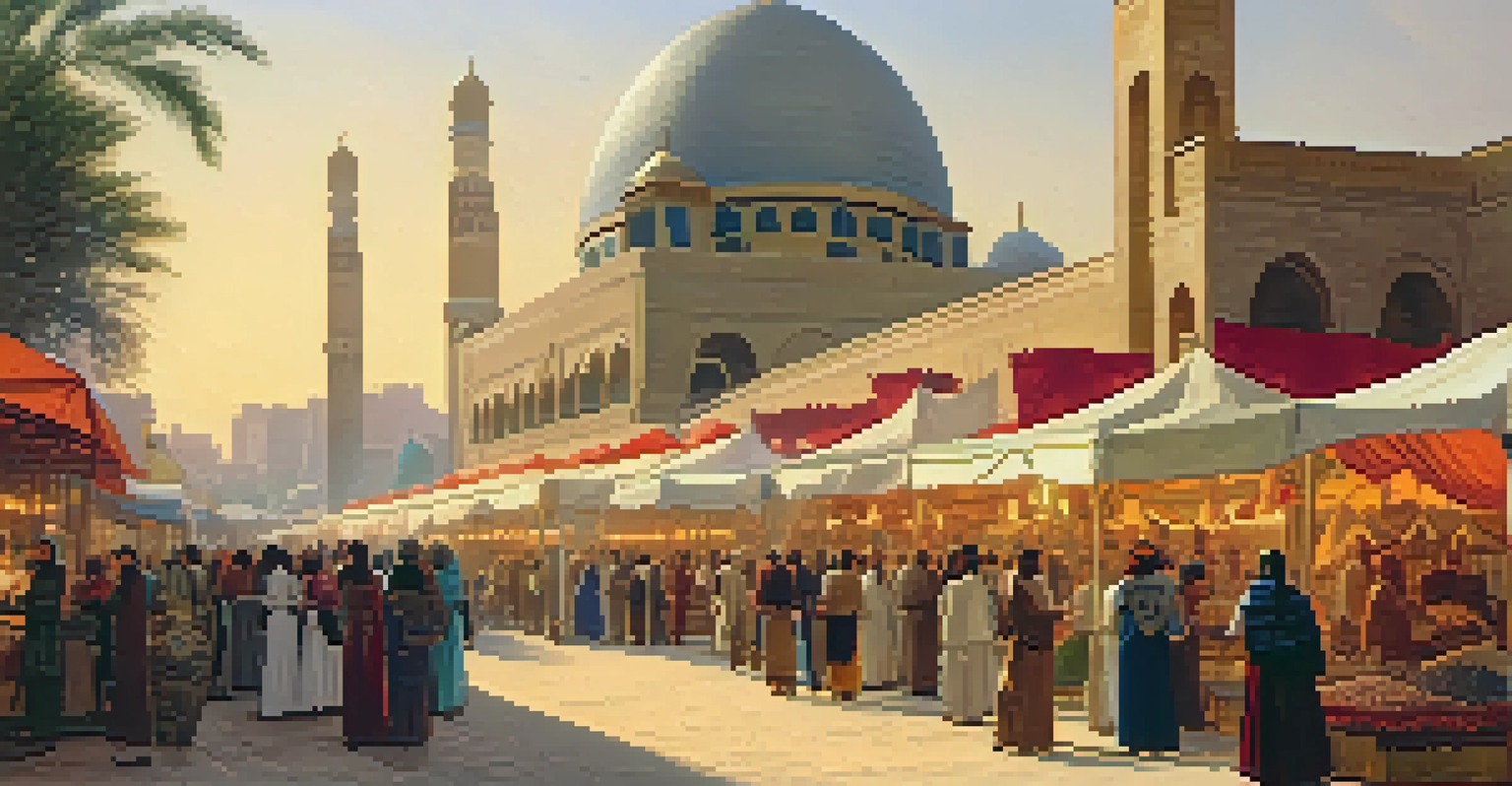The 1904 World's Fair: Innovation and Influence

The Origins of the 1904 World's Fair
The 1904 World's Fair, officially known as the Louisiana Purchase Exposition, was held in St. Louis, Missouri, to commemorate the centennial of the 1803 Louisiana Purchase. This event aimed to showcase the economic and cultural achievements of the United States at the turn of the century. With a sprawling 1,200-acre site, the fair was a massive undertaking that drew millions of visitors from around the globe.
The greatest discoveries are those that help us to understand and appreciate the world we live in.
Organizers envisioned a grand exhibition that would not only celebrate American progress but also display advancements from various countries. This was a time when the world was captivated by industrialization, and the fair was seen as an opportunity to highlight technological marvels and cultural exhibitions. The fair also served as a platform for countries to showcase their innovations and achievements.
As the fair unfolded, it became a melting pot of ideas and cultures, with over 50 nations participating. This collaboration laid the groundwork for international cooperation, emphasizing the interconnectedness of different societies. The fair sparked excitement and curiosity, setting the stage for a transformative experience for attendees.
Innovations That Changed the World
The 1904 World's Fair was a launchpad for numerous innovations that would shape the future. Among the most notable was the introduction of the ice cream cone, which quickly became a staple treat at fairs and festivals. Vendors served this delightful treat in waffle cones, making it easy for attendees to enjoy while wandering the vast grounds.

Another groundbreaking invention showcased at the fair was the first moving sidewalk, or 'travelator,' which provided a new way for people to navigate large spaces. This concept, although not widely adopted at the time, foreshadowed the development of modern escalators and moving walkways we see in airports today. The fair highlighted the spirit of innovation that characterized the era.
Celebration of Innovation
The 1904 World's Fair showcased groundbreaking inventions like the ice cream cone and the first moving sidewalk, highlighting the spirit of innovation at the turn of the century.
In addition to food and transportation, the fair also introduced the world to the telephone and the latest advancements in electrical engineering. Companies like Westinghouse and General Electric showcased their technologies, demonstrating the potential of electricity in everyday life. This exposure helped to pave the way for the widespread adoption of electrical appliances in homes.
Cultural Exhibitions and Their Impact
The 1904 World's Fair was not just about technology; it was also a vibrant celebration of culture. Various pavilions represented different nations, each displaying their unique traditions, art, and cuisine. Visitors could experience the sights and sounds of far-off lands without ever leaving St. Louis, fostering a sense of global curiosity and appreciation.
Innovation distinguishes between a leader and a follower.
One notable pavilion was the 'Street in Cairo,' which recreated a bustling Egyptian market. This immersive experience transported visitors to another world, allowing them to engage with performers and artisans. Such exhibitions played a vital role in broadening perspectives and promoting cultural exchange among attendees.
However, it's important to acknowledge the complex narratives surrounding some of these cultural displays. For instance, the fair included exhibitions of Indigenous peoples from North America, often presented in a stereotypical manner. These depictions sparked conversations about representation and cultural sensitivity that continue to resonate today.
The Role of the Ferris Wheel in the Fair
One of the most iconic attractions of the 1904 World's Fair was the giant Ferris wheel, designed by George Washington Gale Ferris Jr. Standing 250 feet tall, it offered breathtaking views of the fairgrounds and the surrounding city. This engineering marvel captivated the imaginations of millions, becoming a symbol of both the fair and the era's spirit of innovation.
The Ferris wheel was not just a ride; it represented the ingenuity and ambition of American engineers. It was a stark contrast to the Eiffel Tower, which had been built for the 1889 World's Fair in Paris, showcasing the competitive nature of international exhibitions. The success of the Ferris wheel solidified its place as a beloved fixture in amusement parks around the world.
Cultural Exchange and Impact
The fair fostered a vibrant cultural exchange, featuring pavilions from over 50 nations that broadened perspectives and promoted global curiosity.
Riding the Ferris wheel allowed fairgoers to experience a thrill while also providing a unique vantage point to appreciate the scale of the fair. It became a must-do attraction, drawing long lines and leaving lasting memories for those who dared to ascend. This blend of entertainment and engineering showcased the fair's commitment to providing joy and wonder.
The Influence on American Society
The impact of the 1904 World's Fair extended far beyond the event itself; it influenced American society in profound ways. The fair highlighted the importance of innovation and progress, encouraging a national mindset focused on growth and development. This period of cultural exchange and technological advancement contributed to an era of optimism in the United States.
Moreover, the fair helped to solidify St. Louis's reputation as a center for trade and industry. The successful execution of such a massive event attracted businesses and investors to the area, stimulating economic growth. This legacy is still evident today, as St. Louis continues to thrive as a cultural and economic hub.
Additionally, the fair sparked a greater interest in international cooperation and diplomacy. By showcasing the achievements of nations around the world, it fostered a spirit of understanding and collaboration, setting the stage for future global engagements. The fair's emphasis on unity through diversity remains a relevant message in our increasingly interconnected world.
Legacy of the 1904 World's Fair
The legacy of the 1904 World's Fair is evident in various aspects of modern culture and technology. Its influence can be seen in subsequent world fairs, which continued to showcase innovation and cultural exchange. The fair set a precedent for future exhibitions, establishing a platform for nations to come together and share their achievements.
Furthermore, the fair’s focus on technological advancements paved the way for future innovations in transportation, communication, and entertainment. Many of the ideas and inventions introduced at the fair laid the groundwork for the conveniences we enjoy today, making it a significant milestone in the timeline of progress.
Enduring Legacy and Influence
The legacy of the 1904 World's Fair continues to influence modern society through advancements in technology, transportation, and the emphasis on public green spaces.
The fair also sparked a renewed interest in the importance of public parks and green spaces, as the fairgrounds were designed with beautiful landscaping and gardens. This emphasis on nature in urban environments has influenced city planning in the years since, promoting the idea that access to green spaces is essential for community well-being.
Conclusion: A Celebration of Human Achievement
In conclusion, the 1904 World's Fair was a monumental event that celebrated human achievement and ingenuity. It showcased innovations that would shape the future while fostering cultural exchange and understanding among diverse nations. The fair remains a testament to the spirit of collaboration and the desire to explore new horizons.
As we reflect on the significance of the 1904 World's Fair, we can appreciate its role in shaping modern society. The innovations and cultural experiences presented at the fair continue to inspire and inform our understanding of progress and interconnectedness. It serves as a reminder of the importance of celebrating diversity and fostering cooperation in an ever-evolving world.

Ultimately, the 1904 World's Fair was more than just an exhibition; it was a celebration of human potential. Its legacy endures, reminding us that when we come together to share ideas and celebrate our differences, we can create a brighter future for all.